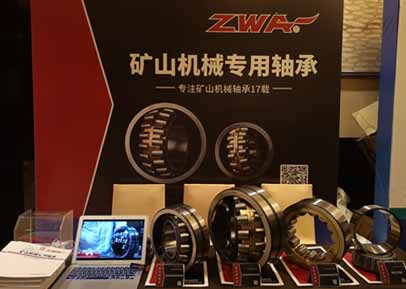
Split spherical roller bearings are a type of bearing widely used in various machinery, especially in locations that are hard to access. Their typical applications include conveyor equipment, material handling equipment, ventilation equipment, steel rolling, ships, and paper-making industries. This article will discuss the installation methods of split spherical roller bearings to help users better understand how to install them effectively.
Before installing split spherical roller bearings, it is first necessary to ensure that the replacement bearing matches the existing equipment. Usually, split spherical roller bearings replace non-split spherical roller bearings with adapters. Before replacement, ensure that the outer diameter, outer ring width, and diameter of the bearing seat are the same for smooth installation.
Split spherical roller bearings are designed to be easily installed in split bearing housings without additional machining. This feature is particularly suitable for bearing housings from other manufacturers with the same inner dimensions. Split spherical roller bearings and non-split spherical roller bearings maintain the same installation space, which means users can enjoy a simple and efficient operation experience during bearing replacement.
Check installation environment
Before installation, first ensure the cleanliness of the work environment to avoid dust and impurities affecting the bearing's service life.
Prepare tools and materials
Ensure all necessary tools and materials are complete, including installation tools, lubricants, and compatible split spherical roller bearings.
Install bearing housing
Fix the split bearing housing onto the equipment. Ensure the bearing housing is installed smoothly to avoid vibrations during subsequent operations.
Install split spherical roller bearings
Place the split spherical roller bearings into the bearing housing and ensure a tight fit between the inner ring and the shaft. The split inner ring, outer ring, and cage are fixed with screws to ensure stability.
Tighten screws
After installation, tighten the screws according to the specified torque to ensure the bearing is securely fixed.
Check and lubricate
After completing the installation, perform a final check and lubricate according to the manufacturer's recommendations to ensure the split spherical roller bearings run smoothly.
Split spherical roller bearings have several design advantages, making them particularly popular in industrial applications.
Firstly, their cylindrical bore design ensures greater stability under load. The split structure of the inner ring, outer ring, and cage makes the installation and replacement process more convenient.
Secondly, split spherical roller bearings mostly evolve from the proven spherical roller bearings E1, boasting good reliability and durability. Especially on the inner rings of some larger bearings, the design features rigid central ribs, further enhancing their load-carrying capacity.
Additionally, these bearings adopt split integral cages made from fiberglass-reinforced polyamide or brass materials, capable of maintaining stable performance under high-temperature conditions.
Lastly, the regular tolerances and internal clearance settings of split spherical roller bearings ensure their efficiency during operation.

